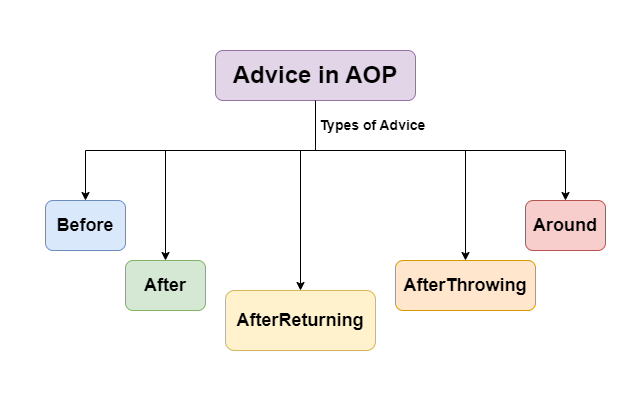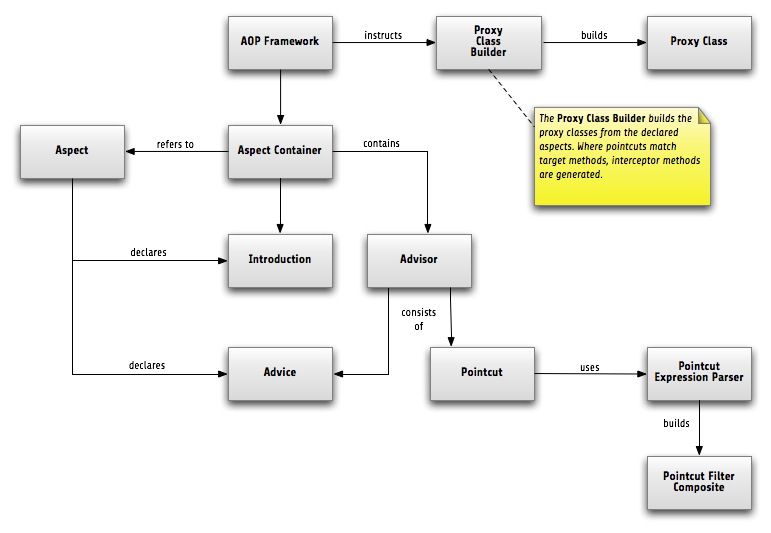Introduction: The Challenge of Cross-Cutting Concerns
In modern software development, our primary focus is on writing clean, modular, and maintainable code that delivers core business value. However, applications are rarely just about business logic. They require essential supporting services like logging, security, transaction management, and performance monitoring. These are known as cross-cutting concerns because they “cut across” multiple layers and modules of an application. When this logic is manually sprinkled throughout our business code, it leads to code tangling and repetition. The result? Our core services become cluttered, harder to read, and significantly more difficult to maintain. This is a common pain point discussed in the latest Spring news and the broader Java ecosystem news.
This is where Aspect-Oriented Programming (AOP) enters the stage. AOP is a programming paradigm that aims to increase modularity by allowing the separation of cross-cutting concerns. It enables us to define these auxiliary behaviors in one place and declaratively apply them where needed, without modifying the core business logic. The Spring Framework provides a powerful and elegant AOP implementation that lets us “dress up” our core components with additional functionality. By using AOP, we can transform the behavior of our objects at runtime, adding layers of functionality just like an actor puts on a costume to perform a role, keeping the actor (our business logic) fundamentally unchanged underneath.
Section 1: The Core Concepts of AOP: The Cast and the Stage
To master Spring AOP, it’s crucial to understand its fundamental terminology. Thinking of it like a theatrical performance can help clarify these concepts. The latest Java 17 news and Java 21 news highlight how modern Java features can work seamlessly with these established enterprise patterns.
The AOP Terminology Breakdown
- Aspect: This is the module that encapsulates a cross-cutting concern. In our theater analogy, the Aspect is the “performer” who has a specific role, like providing commentary (logging) or checking tickets (security). It’s a regular Java class annotated with
@Aspect. - Join Point: A specific point during the execution of a program, such as a method execution or an exception being handled. This is a “moment” in the performance where an action can occur. In Spring AOP, a join point is always the execution of a method.
- Advice: The action taken by an aspect at a particular join point. This is the “act” itself. Spring offers several types of advice:
@Before: Advice that executes before a join point.@After: Advice that executes after a join point, regardless of its outcome (success or failure).@AfterReturning: Advice that executes only after a join point completes successfully.@AfterThrowing: Advice that executes only if a method exits by throwing an exception.@Around: The most powerful advice. It “surrounds” a join point and can perform custom behavior before and after the method invocation. It can even prevent the method from executing altogether.
- Pointcut: A predicate or expression that matches join points. The pointcut defines “when and where” the advice should be applied. It’s the “script” that tells the performer their cue.
- Target Object: The object being advised by one or more aspects. This is the “original actor” whose performance is being enhanced.
- Proxy: An object created by the AOP framework at runtime that wraps the target object. It combines the target’s logic with the advice’s behavior. When a client calls a method on the proxy, the proxy can execute the aspect’s advice before or after delegating the call to the original target object. This is the actor in their full performance persona.
A Simple Logging Example
Let’s see these concepts in action with a basic logging aspect. This aspect will log a message before any method in a specific service class is executed.
package com.example.aopdemo.aspect;
import org.aspectj.lang.JoinPoint;
import org.aspectj.lang.annotation.Aspect;
import org.aspectj.lang.annotation.Before;
import org.aspectj.lang.annotation.Pointcut;
import org.slf4j.Logger;
import org.slf4j.LoggerFactory;
import org.springframework.stereotype.Component;
@Aspect
@Component
public class LoggingAspect {
private static final Logger LOGGER = LoggerFactory.getLogger(LoggingAspect.class);
// Pointcut that matches all methods in the CustomerService class
@Pointcut("execution(* com.example.aopdemo.service.CustomerService.*(..))")
public void customerServiceMethods() {}
// Advice that runs before any method matched by the pointcut
@Before("customerServiceMethods()")
public void logBeforeMethodExecution(JoinPoint joinPoint) {
String methodName = joinPoint.getSignature().getName();
String className = joinPoint.getTarget().getClass().getSimpleName();
LOGGER.info("Executing method: {}.{}()", className, methodName);
}
}
In this example, LoggingAspect is our aspect. The customerServiceMethods() method defines a pointcut using an execution expression. The logBeforeMethodExecution method is the @Before advice that uses this pointcut. When any method in CustomerService is called, this advice will run first, printing a log message.
Section 2: Setting the Scene: Implementing AOP in a Spring Boot Application
Integrating AOP into a Spring Boot application is straightforward, thanks to Spring’s auto-configuration capabilities. The key is to include the necessary dependency and let Spring Boot handle the rest. This ease of integration is a frequent topic in Spring Boot news.
Enabling AOP

To get started, you need to add the spring-boot-starter-aop dependency to your build file. This starter pulls in both Spring AOP and AspectJ, the underlying library that powers the AOP implementation.
For Maven news followers, here’s the dependency for your pom.xml:
<dependency>
<groupId>org.springframework.boot</groupId>
<artifactId>spring-boot-starter-aop</artifactId>
</dependency>
And for those following Gradle news, add this to your build.gradle:
implementation 'org.springframework.boot:spring-boot-starter-aop'
Once this dependency is present, Spring Boot’s auto-configuration will detect AspectJ on the classpath and automatically enable AOP proxying. In some older or non-Boot Spring applications, you might need to explicitly add the @EnableAspectJAutoProxy annotation to a configuration class, but in most modern Spring Boot projects, this is handled for you.
Practical Example: Performance Monitoring
A common and highly practical use case for AOP is performance monitoring. Let’s create an aspect that measures the execution time of a method using @Around advice. This is invaluable for identifying bottlenecks and is a key topic in Java performance news.
package com.example.aopdemo.aspect;
import org.aspectj.lang.ProceedingJoinPoint;
import org.aspectj.lang.annotation.Around;
import org.aspectj.lang.annotation.Aspect;
import org.slf4j.Logger;
import org.slf4j.LoggerFactory;
import org.springframework.stereotype.Component;
@Aspect
@Component
public class PerformanceMonitorAspect {
private static final Logger LOGGER = LoggerFactory.getLogger(PerformanceMonitorAspect.class);
@Around("execution(* com.example.aopdemo.service..*(..))")
public Object measureMethodExecutionTime(ProceedingJoinPoint proceedingJoinPoint) throws Throwable {
long startTime = System.currentTimeMillis();
// Proceed with the original method execution
Object result = proceedingJoinPoint.proceed();
long endTime = System.currentTimeMillis();
long executionTime = endTime - startTime;
String methodName = proceedingJoinPoint.getSignature().toShortString();
LOGGER.info("Method '{}' executed in {} ms", methodName, executionTime);
return result;
}
}
The @Around advice is uniquely powerful. The ProceedingJoinPoint parameter gives us control over the target method’s execution. We can execute code before the method runs, then we must explicitly call proceedingJoinPoint.proceed() to invoke the original method. After it completes, we can execute more code. This allows us to wrap the entire method call, making it perfect for timing, transaction management, or caching.
Section 3: Advanced Choreography: Custom Annotations and Pointcuts
While execution pointcuts are powerful, they can be brittle. Tying aspects directly to package or class names can lead to maintenance issues if you refactor your code. A more robust and declarative approach is to use custom annotations to mark the methods you want to advise. This creates a clean, self-documenting contract between your business logic and your aspects.
Creating a Custom Annotation
First, let’s define a simple annotation. This annotation will serve as a marker for our aspect.
package com.example.aopdemo.annotation;
import java.lang.annotation.ElementType;
import java.lang.annotation.Retention;
import java.lang.annotation.RetentionPolicy;
import java.lang.annotation.Target;
@Target(ElementType.METHOD)
@Retention(RetentionPolicy.RUNTIME)
public @interface Loggable {
}
Here, @Target(ElementType.METHOD) specifies that this annotation can only be applied to methods. @Retention(RetentionPolicy.RUNTIME) ensures the annotation is available to the JVM at runtime, which is necessary for our AOP proxy to detect it.
Targeting the Annotation with a Pointcut

Next, we modify our aspect to use the @annotation pointcut designator. This tells the aspect to target any method marked with our @Loggable annotation.
package com.example.aopdemo.aspect;
import org.aspectj.lang.JoinPoint;
import org.aspectj.lang.annotation.Aspect;
import org.aspectj.lang.annotation.Before;
import org.slf4j.Logger;
import org.slf4j.LoggerFactory;
import org.springframework.stereotype.Component;
import java.util.Arrays;
@Aspect
@Component
public class AnnotationBasedLoggingAspect {
private static final Logger LOGGER = LoggerFactory.getLogger(AnnotationBasedLoggingAspect.class);
// Pointcut that matches any method annotated with @Loggable
@Before("@annotation(com.example.aopdemo.annotation.Loggable)")
public void logMethodCall(JoinPoint joinPoint) {
String methodName = joinPoint.getSignature().getName();
Object[] args = joinPoint.getArgs();
LOGGER.info("Method '{}' called with arguments: {}", methodName, Arrays.toString(args));
}
}
Now, to apply this logging behavior, we simply add the @Loggable annotation to any method in our application:
package com.example.aopdemo.service;
import com.example.aopdemo.annotation.Loggable;
import org.springframework.stereotype.Service;
@Service
public class ProductService {
@Loggable
public void addProduct(String productName, double price) {
// Business logic to add a product
System.out.println("Adding product: " + productName);
}
}
This approach is incredibly clean. The ProductService has no direct dependency on the logging aspect. The intention is clear just from reading the code, and we can easily apply or remove the cross-cutting concern by adding or removing a single annotation. This pattern is widely used for security checks, caching, and more, reflecting the latest in clean architecture discussions in the Java news community.
Section 4: Best Practices and Backstage Considerations
While Spring AOP is a powerful tool, it’s important to use it wisely. Here are some best practices and common pitfalls to keep in mind, touching upon recent trends in Java security news and testing.
Performance Considerations
AOP works by creating proxies at runtime. Spring uses two types of proxies: JDK dynamic proxies (which require an interface) and CGLIB proxies (which work on classes via subclassing). While the performance overhead is minimal for most applications, it’s not zero. For high-performance, low-latency systems, be mindful of applying aspects to methods that are called thousands of times per second. Profile your application to ensure AOP isn’t becoming a bottleneck.
The Self-Invocation Pitfall

A common trap for developers new to AOP is the self-invocation problem. If a method within a proxied bean calls another method on the same bean (e.g., using this.anotherMethod()), the call will not be intercepted by the proxy. This is because the call is made directly on the target object instance, bypassing the proxy wrapper entirely. To work around this, you can inject the bean into itself or refactor the called method into a separate bean.
Testing Aspects
Testing aspects is crucial. According to the latest JUnit news and Mockito news, you should test aspects in two ways:
- Unit Testing: Test the advice logic in isolation. You can create mock
JoinPointorProceedingJoinPointobjects to verify that your aspect’s logic behaves correctly under different conditions. - Integration Testing: Use Spring’s testing framework (
@SpringBootTest) to load the application context and verify that the aspects are correctly applied to your target beans. This ensures the pointcut expressions are correct and the proxying mechanism is working as expected.
Keep Aspects Focused
An aspect should address a single cross-cutting concern. Avoid creating a “god” aspect that handles logging, security, and transactions all at once. Keeping aspects small and focused makes them easier to understand, test, and maintain, which is a core principle of modern software design often discussed in Java wisdom tips news.
Conclusion: A Powerful Tool for Modern Java Development
Spring AOP provides an elegant and powerful solution for managing cross-cutting concerns, allowing developers to build cleaner, more modular, and highly maintainable applications. By separating concerns like logging, security, and performance monitoring from core business logic, we can focus on what truly matters: delivering value. As we’ve seen, whether through simple execution pointcuts or sophisticated custom annotations, AOP enables us to “dress up” our code with essential behaviors in a non-invasive way.
As you continue your journey with Java and Spring, embracing AOP will be a significant step toward writing professional, enterprise-grade code. It’s a cornerstone of the Spring ecosystem and a technique that, once mastered, will fundamentally improve your application architecture. Keep an eye on the evolving Java SE news and frameworks like Spring AI and LangChain4j, as AOP patterns will undoubtedly play a role in managing concerns in these new domains as well.

